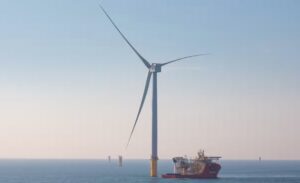Australian researchers have set a new world record conversion efficiency for next-generation solar cells, improving on a record they already held.
Researchers at the Australian National University set the new efficiency record for perovskite solar cells, breaking a record that was already held by the Canberra-based university.
The results of the research have been published in the journal Nature, and detail how a solar conversion efficiency of 22.6 per cent for a one square centimetre cell, was achieved through improvements on previous perovskite solar cells.
Conversion efficiencies for solar cells are a measure of how much of the available solar energy that a cell normally receives through sunlight can be converted into useful electricity.
Commercially available solar cells are currently dominated by conventional designs that use silicon wafers as the main semiconductor material.
While silicon solar cells can be easily and affordably produced, they depend on ultra-pure silicon supplies – which have experienced price fluctuations as the demand for silicon surges – and the wafer designs are generally inflexible and brittle.
Perovskite solar cells, which consist of lightweight and flexible materials, have the potential to be produced at a lower cost and be deployed in a much wider range of situations, including being incorporated directly into the surfaces of structures like buildings and vehicles.
As perovskite solar cells can absorb different parts of the solar spectrum, they can also be combined with silicon solar cells, being “stacked” to produce a “tandem” cell that can achieve a higher combined operating efficiency – approaching 30 per cent.
The main challenge for perovskite solar cells has been their lower standalone efficiencies compared to silicon solar cells and their tendency to suffer much faster performance degradation when exposed to environmental conditions.
ANU researcher and report co-author professor Kylie Catchpole said the latest achievement represents an important step towards commercially available perovskite solar cells.
“We’re always trying to reach the highest efficiency we can. Commercialisation won’t happen without high efficiency,” Catchpole said.
“But we need a cheap process as well. This is an approach that definitely combines those two elements in a way that’s different to how it’s been achieved previously.”
The ANU research team said that the new solar cell design delivered a boost to efficiency and made the cells easier to manufacture.
Key to the efficiency boost was the discovery by the research team of a previously undetected flaw in earlier perovskite solar cell designs that has now been rectified for the first time.
“We’ve also been able to overcome an energy loss in one of the layers that scientists didn’t previously realise was there,” professor Catchpole added.
“The modelling we’ve done shows this was a limitation in previous types of solar cells.”
ANU researchers set a solar conversion record for perovskite solar cells in 2019, achieving an efficiency at the time of 21.6 per cent.
Last year, a separate research team also set a performance record for two-sided solar cells, which allow electricity to be produced from light hitting both sides of a solar cells.
The ANU had also initially set a world record efficiency for the tandem solar cells, using silicon and perovskite cells stacked together, achieving an efficiency of 27.7 per cent. The Australian research team were eventually overtaken by a German-based research group, which has successfully achieved a 29.8 per cent conversion efficiency.
The ANU research was supported by funding provided by the Australian Renewable Energy Agency.








